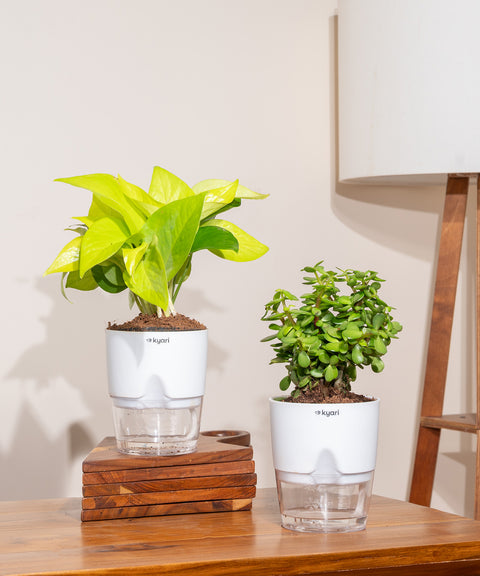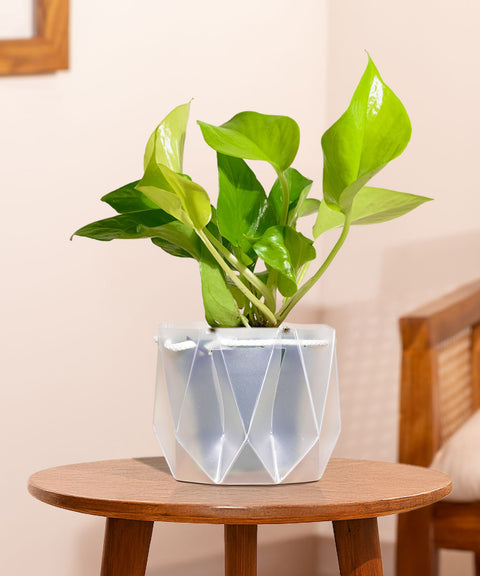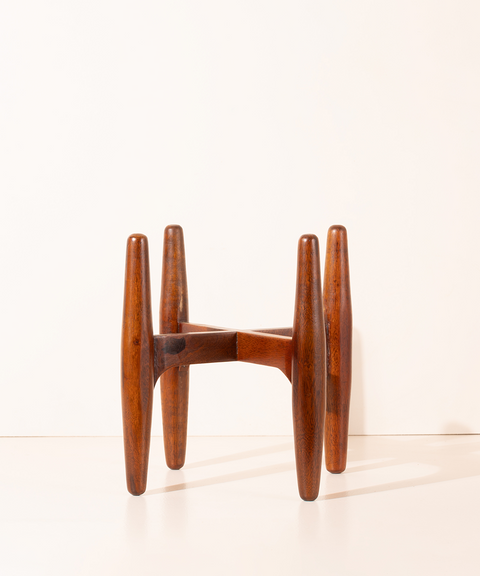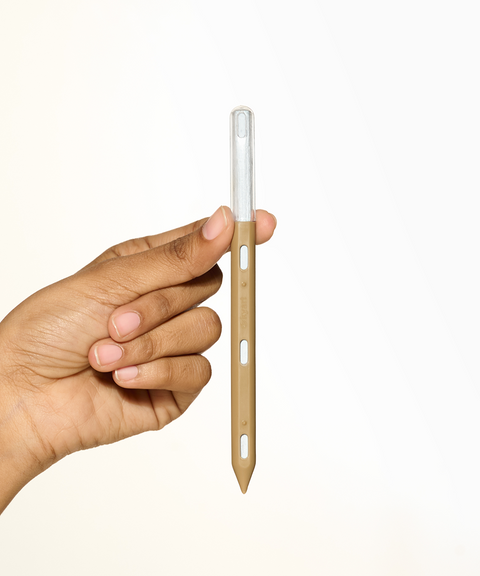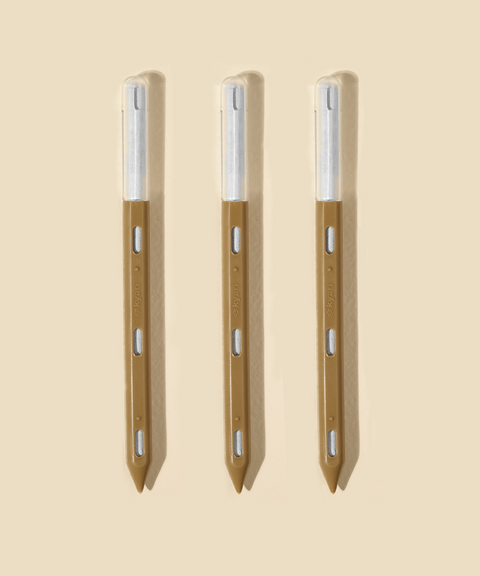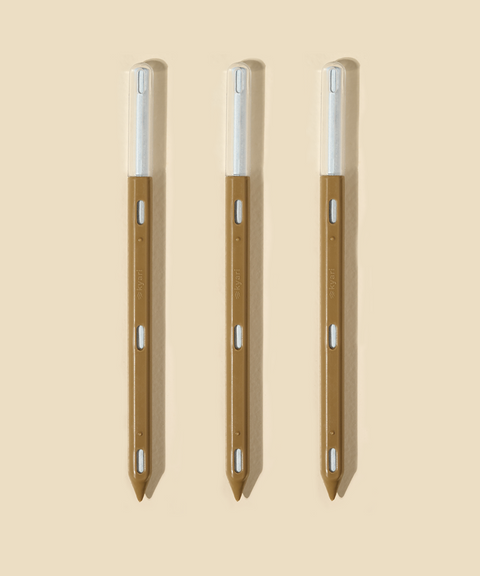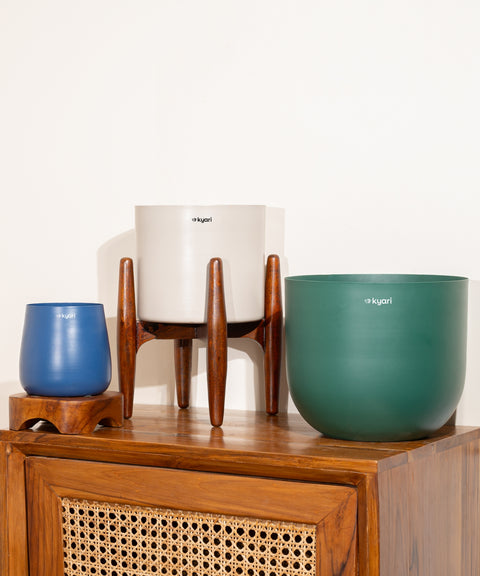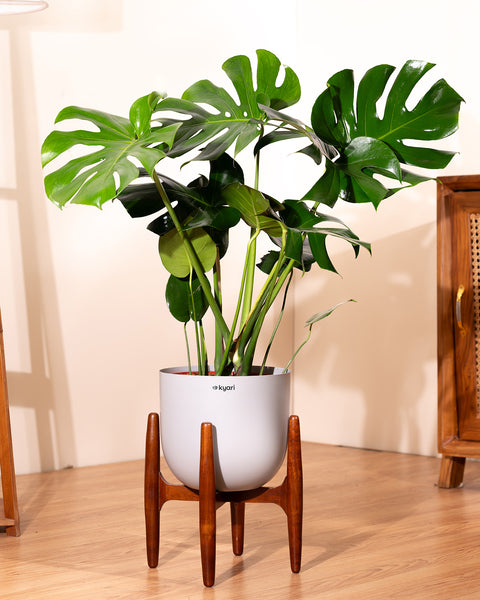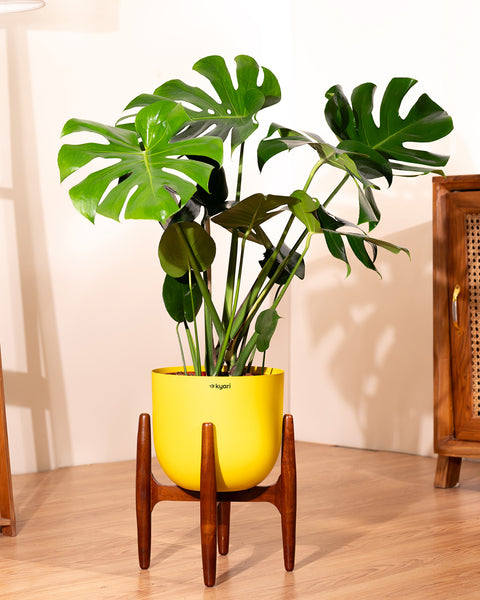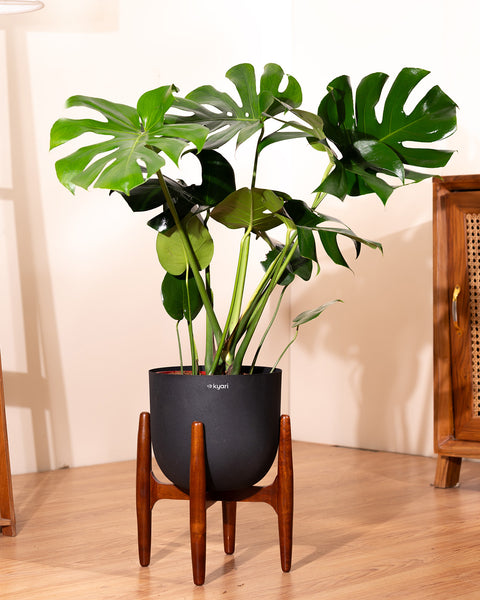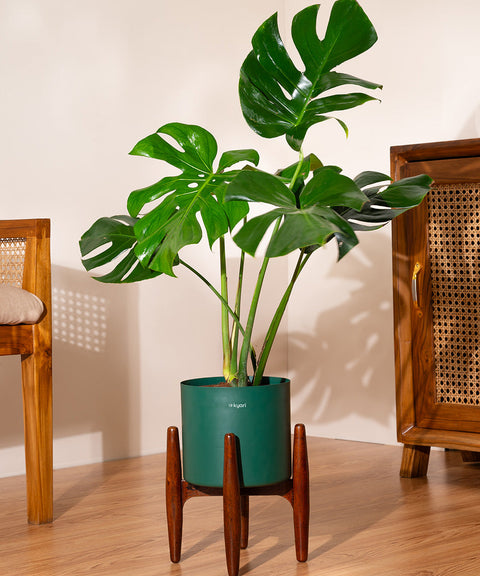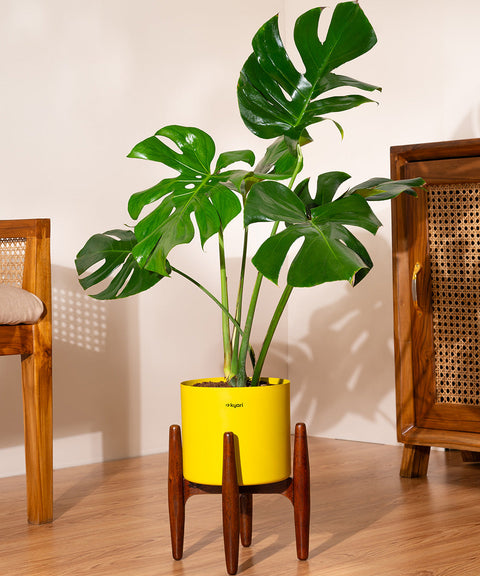Without a doubt, every plant lover understands what it means to have an effective watering program. Because of some life commitments or just being out of sight, watering is often ignored, which negatively affects the health of the plants. For a smart and effective remedy, this is where self-watering systems come in.
Including a self watering system for plants in your garden could be a solution to reduce the amount of work of taking care of your plants and help ensure that they are strong and intact even without you.
Here, we will look at the concept behind such systems, the good and bad of using them, and point out reasons why they make a perfect choice for all types of specific indoor and outdoor gardens.
What Are Self-Watering Pots?
A self watering system for planters is a technique that keeps plants moist by gradually absorbing water from their roots. Unlike normal flowerpots, which need human interference for watering, these pots are equipped with a storage tank so that water goes directly into the soil when needed by the roots of the plant. This idea is similar to how plants take up water from the soil; hence, it becomes easy for the plants to control their intake while growing in a variety of environmental conditions.
Apart from being convenient, self-watering pots also save time when used in both indoor and outdoor gardens. Such pots are particularly useful for people who want to take care of potted plants with no effort, thus becoming the popular choice for the self watering system for potted plants.
Key Components of Self-Watering Pots
A self watering system for plants at home or outdoors consists of several key components:
-
Water Retention:
There is a basin at the lowest section of the container that holds water, which decreases the frequency of watering.
-
Drainage Mechanism:
This is a system made from typically cotton string or other absorbent materials that is employed for sucking out water from a reservoir into the soil.
-
Overflow Outlet:
Most self-watering pots have a drain hole that allows extra water to leak out to avoid overwatering.
-
Water Level Gauge:
This indicates visually how much water is remaining in the tank and hence assists in knowing when to refill it.
These parts work together such that anyone can have an efficient self watering system for pots, thus keeping them moist all the time while minimising chances of over-watering.
Step-by-Step Workings of Self-Watering Pots
Here is a more detailed account of how self-watering systems for house plants work:
1. Filling Reservoir:
Initially, we have to fill the combined water storage underneath the container with soil. This tank has enough water for several days to keep plants alive, depending on their size and need.
2. Capillary Action:
After filling the reservoir, it is time for the drainage system to come into play. The drain, constructed of an absorbing substance, draws out water from this reservoir and absorbs it into the earth above it. Just as water flows through soil naturally outside.
3. Soil Absorption:
The ground’s entry of moisture takes place by capillary action and keeps it wet. Water goes directly to roots, unlike traditional watering methods, hence fulfilling plants’ most basic need—moisture.
4. Water Level Monitoring:
A water level indicator lets you monitor the degree of filling of your small container, which tells you when to refill it.
5. Overflow Prevention:
When there’s too much water, it goes out through an overflow hole so that the outdoor self watering system or indoor systems won’t damage any type of plant.
This self watering system for outdoor plants or indoor use provides a continuous and consistent water supply, ensuring optimal hydration for your plants.
Benefits of Using Self-Watering Pots
Here are some extensive points on the advantages of employing self-watering containers:
1. Water Conservation and Efficiency
One of the leading pros of the use of a self watering system for potted plants is the conservation of water. These containers minimise waste since they hold water reserves from which it is gradually released, thus making them more environmentally friendly.
2. Reduction in Watering Frequency
If you happen to have a home that is equipped with a self watering system for plants, there is no reason why you should go on watering your plants every day. Depending on the size of the reservoir, you may only need to refill it every few days or even weekly, saving time and effort.
3. Prevention of Root Rot and Overwatering
Most of the time, traditional pots are characterised by drainage problems that result in rotten roots as well as over-watering problems. The self-watering system for indoor plants offers a solution to this by providing that the water goes straight into the roots so that the plant absorbs only what it needs.
4. Convenience for Gardeners
Whatever your gardening experience level, whether you are an expert or a beginner, having a self watering system for outdoor plants or indoor setups is unbeatable in terms of convenience. You no longer have to worry about whether you are watering your plants well or not because this system guarantees high levels of plant hydration even when you are not around.
Conclusion
Self-watering pots are a great way to ensure that you are taking good care of your houseplants by consistently giving them the ideal amount of water. It is easy to use the self watering system for planters both indoors and outdoors to maintain plants. These systems provide many benefits, like conserving water, which prevents root rot, thus making them essential for every garden lover.
Frequently Asked Questions
1. Are all types of plants suitable for self-watering containers?
Although self-watering containers are appropriate for different varieties of flora, they perform optimally on those that require moist conditions. However, drier conditions preferred by cacti and succulent plants may not be ideal in a self watering system for plants because of excessive moisture present.
2. Which types of soil are best suited to self-watering pots?
Taking into consideration the requirements of self-watering vessels, well-drained, light potting mixes should be used, as these would allow any excess water to drain out freely while making sure that the roots still get enough oxygenated air.
3. How could I clean and keep up a self-watering pot?
When looking after a self-watering container, wash out the water tank occasionally to stop any algae or germs from accumulating inside. Furthermore, keep examining the draining system and check whether any rubbish is blocking it while you take regular readings from a water level gauge.
4. Are self-watering pots suitable for outdoor use?
Yes, many self-watering systems for outdoor plants are designed to withstand outdoor conditions. Just ensure the pots have an overflow drainage hole to prevent waterlogging during heavy rainfall.








 Limited Time Deal
Limited Time Deal
 BYOB - Small Plants
BYOB - Small Plants











